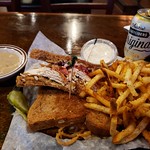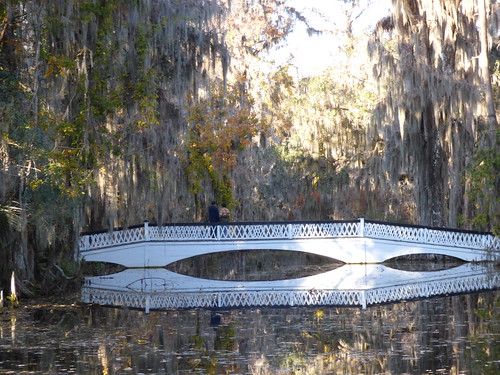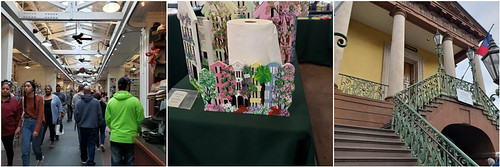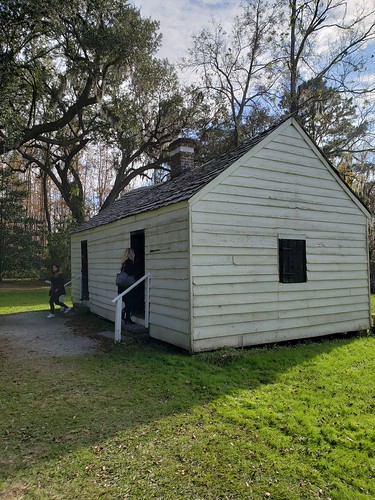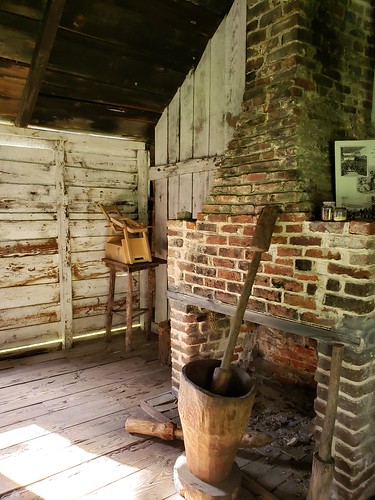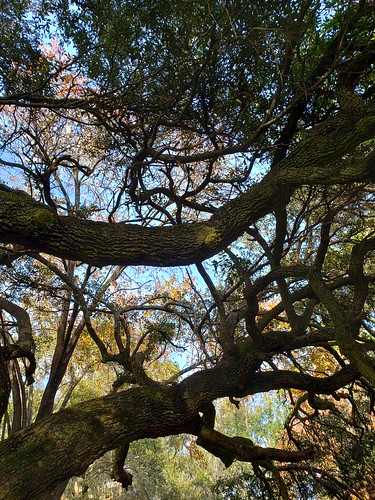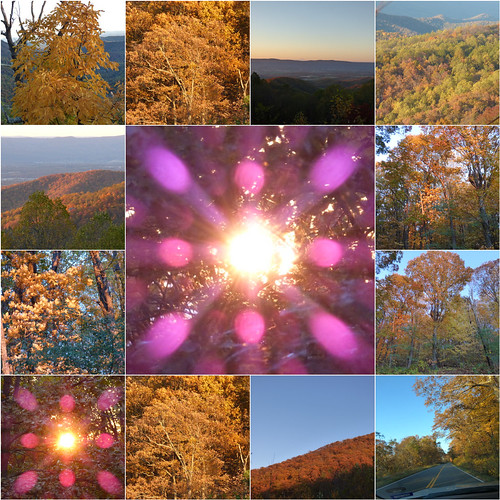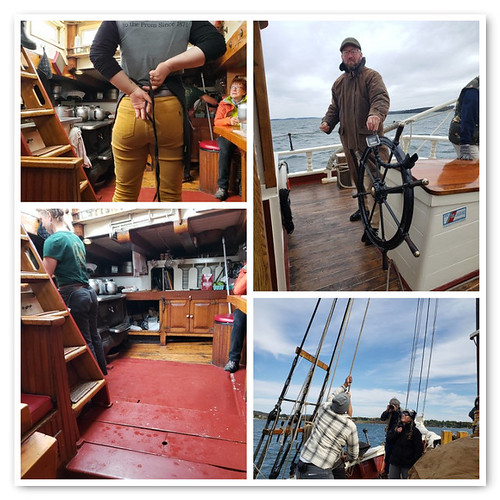December 31, 2019
December 30, 2019
#200 Low Country Cuisine
“The extraordinary mingling of the French, Spanish, African, and Caribbean cultures that took root here during the centuries of sometimes tumultuous history has left an imprint on the local cuisine, which incorporates traditional Low Country ingredients such as shrimp, oysters, rice, okra, field greens, and tomatoes.”
That translates to – lots of seafood stuff that I can’t eat. So, my take was more traditional southern than seafood, but this “thing” will definitely be revisited because I didn’t get to Magnolia which is specifically called out in 1000PTSBYD.
That translates to – lots of seafood stuff that I can’t eat. So, my take was more traditional southern than seafood, but this “thing” will definitely be revisited because I didn’t get to Magnolia which is specifically called out in 1000PTSBYD.
December 28, 2019
#199 Heart of Charleston
“America’s most intact colonial city, sultry, and gracious Charleston seduces visitors with its languid mystery and European charm, its historic architecture and friendly residents, and lately its exciting arts and restaurant scene – heralds of the city’s new golden age.”
“Founded in 1670, Charleston took less than a century to become one of the richest cities in colonial America. The British laid much of it to waste during the Revolution, and just one century later the city became the symbol of Southern resistance [more accurately: treason] when the first shots of the Civil War were fired at Union-occupied Fort Sumter, which guards Charleston Harbor. Take a crash course in the city’s heritage with a visit to the Charleston Museum, the country’s oldest (founded in 1773), located in the Heart of the Historic District.”
Can’t visit Charleston without seeing the famous pineapple fountain.
I voluntarily went to the Charleston Market. It was….exactly like I thought it would be. Crowded, hot, and shopping.
I had a plan to visit several of the area’s plantations but was only able to see one. Magnolia Plantation. Magnolia is Charleston’s most visited plantation. It was founded in 1676 by the Drayton family and opened its gardens to visitors in 1870 making it the oldest public tourist site in the Low Country and the oldest public gardens in America.
They also host a Chinese Lantern Festival during December and that was set up when I visited the day after Thanksgiving.
I did two tours The Nature Tram and From Slavery to Freedom.
From Slavery to Freedom tours five historic structures that date back to 1850. The docent was really good he spoke about the rise of rice plantations and the dehumanization of slavery. One of the preserved cabins was actually inhabited by descendants of Magnolia’s enslaved people until the 1990s.
He talked about the brutal labor that was required and how slaves were seen as an investment, not people. To illustrate this he pointed across the road and told us the slaves were initially housed there, in simple adobe homes that were flat on the ground. Now, if you’ve ever been to the coastal south, you’ll know that all the homes are built on stilts…at least a foot high. This reduces the flooding and just general damp, the mosquitoes, etc.
This means it also reduces the likelihood that you’ll get sick and die from diseases associated with all of that. Plantation owners didn’t really care if their slaves died, at least initially. They were a disposable asset, cheap to replace. But once the import of slaves were banned, owners took (and I can’t emphasize this enough) THE MOST BASIC steps to minimally improve living conditions. They also participated in atrocities such as forced childbearing, since they now had to rely on the birth rate to maintain their enslaved populations.
So, after spending an hour entrenched in the atrocities of our forefathers, I took the nature tram. Again, really good guide, and this time we got to see alligators. We also got to see first-hand some of the damage that Hurricane Dorian did as it ripped along the coast felling trees and tearing everything up.
“Founded in 1670, Charleston took less than a century to become one of the richest cities in colonial America. The British laid much of it to waste during the Revolution, and just one century later the city became the symbol of Southern resistance [more accurately: treason] when the first shots of the Civil War were fired at Union-occupied Fort Sumter, which guards Charleston Harbor. Take a crash course in the city’s heritage with a visit to the Charleston Museum, the country’s oldest (founded in 1773), located in the Heart of the Historic District.”
Can’t visit Charleston without seeing the famous pineapple fountain.
I voluntarily went to the Charleston Market. It was….exactly like I thought it would be. Crowded, hot, and shopping.
I had a plan to visit several of the area’s plantations but was only able to see one. Magnolia Plantation. Magnolia is Charleston’s most visited plantation. It was founded in 1676 by the Drayton family and opened its gardens to visitors in 1870 making it the oldest public tourist site in the Low Country and the oldest public gardens in America.
They also host a Chinese Lantern Festival during December and that was set up when I visited the day after Thanksgiving.
I did two tours The Nature Tram and From Slavery to Freedom.
From Slavery to Freedom tours five historic structures that date back to 1850. The docent was really good he spoke about the rise of rice plantations and the dehumanization of slavery. One of the preserved cabins was actually inhabited by descendants of Magnolia’s enslaved people until the 1990s.
He talked about the brutal labor that was required and how slaves were seen as an investment, not people. To illustrate this he pointed across the road and told us the slaves were initially housed there, in simple adobe homes that were flat on the ground. Now, if you’ve ever been to the coastal south, you’ll know that all the homes are built on stilts…at least a foot high. This reduces the flooding and just general damp, the mosquitoes, etc.
This means it also reduces the likelihood that you’ll get sick and die from diseases associated with all of that. Plantation owners didn’t really care if their slaves died, at least initially. They were a disposable asset, cheap to replace. But once the import of slaves were banned, owners took (and I can’t emphasize this enough) THE MOST BASIC steps to minimally improve living conditions. They also participated in atrocities such as forced childbearing, since they now had to rely on the birth rate to maintain their enslaved populations.
So, after spending an hour entrenched in the atrocities of our forefathers, I took the nature tram. Again, really good guide, and this time we got to see alligators. We also got to see first-hand some of the damage that Hurricane Dorian did as it ripped along the coast felling trees and tearing everything up.
December 25, 2019
#198 The Outer Banks
“Some of the most unusual and beautiful beaches on America’s Atlantic coast can be found in North Carolina’s Outer Banks, a string of skinny barrier islands. The candy-striped Cape Hatteras Lighthouse is the most famous structure on the Outer Banks and the tallest of America’s lighthouses. Tricky winds and tides necessitated its construction, having sunk more than 650 ships.”

“Sanderling Inn, which sits just north of the whimsically monikered town of Duck …[is] known as the Outer Bank’s most luxurious refuge, the inn is also ecosensitive. The inn’s restaurant, adjacent to the main house in a restored 1899 United States Lifesaving Station [is] famous for its excellent menu, themed to the sea, and with a Southern slant.”

I had scheduled three weeks in an Airbnb in OBX and was really looking forward to some rest and relaxation, cleaning out my car, and resetting after nearly 6 weeks of weekly moves. It ended up being a different kind of adventure. I ended up with a dental emergency that resulted in my visiting a dentist, an endodontist, and finally an oral surgeon. The oral surgery, while not serious, was not fun, and I spent my first weekend there recovering from that.
The second weekend, I was planning to drive all the way down to Cape Hatteras (Ocracoke Islands is still off-limits after damage suffered in Hurricane Dorian) and then back up to Duck and the Sanderling Inn, but a nor’Easter spun up and my host advised me that driving down to Hatteras might result in me being stranded. I ended up driving to Bodie Lighthouse and then one of the local beaches. It was so cold and windy, and the ocean was already very, angry. I opened my car door at the beach and suddenly, half the beach was in my car and stuck to all my clothes.
My host was right, the only road that runs over the bridge and down to Hatteras was closed. And it was closed for several days. On the bridge they worry about ocean overwash...basically waves crashing over and onto the road and whatever might be on it. Terrifying. And on certain sections, the road is lined with super tall sand dunes. In a storm like this, the wind and ocean overwash blow/push all the sand from the ocean side right onto the road. By the time I drove down to Hatteras a week and a half after the storm, there were still places that were sand-packed.

I also thought this would be a great place to get my oil changed and my tired balanced/rotated. I’d been feeling a lot of vibration in the last couple of weeks, but when they put my car on the lift to work on the tires we all discovered that the rear tires had no tread left. Like, none. Like, I don’t even want to drive this car back to your Airbnb, gone. I’m still so grateful that I didn’t get a flat or have a tire blow out on me. I’ve driven in some pretty remote areas and gone a really long time without seeing another person, so I’m so grateful that I made it somewhere I’d ben staying for several weeks and had the time to get everything done. So, surprise new back tires and shocks.

Positives:
- I really did get to rest up while there. I had a fantastic place to stay, and the host was so nice. I’d mentioned in passing that I’d be holed up all weekend after my dental surgery, and he messaged me Sunday to make sure I was all right and ask if I needed anything because he was headed to the store. The both gave me good local advice, and made sure I didn’t get myself stranded in the wilderness.
- I got my car detailed. It looked amazing! (for about 5 minutes)
- I found the best white pizza in the world. Seriously, I ate at Barefoot Bernie’s 4 or 5 times, and always got the white pizza. They do a lot of seafood, and they took my allergy seriously, and tagged my plate to make sure it didn’t get contaminated. But seriously, it was delicious.
- I also had a bunch of good bbq. I was kind kind of limited in what I could eat, though, because my mouth was still all messed up.
- It really is a beautiful part of the country.
November 22, 2019
November 20, 2019
#21 (Revisited) Monticello
I spent more time at Monticello learning about the enslaved community than ever before, and it's still not enough. Next visit, I'm skipping the house tour and focusing on the offerings around the enslaved community.
Sally Hemings was the half-sister of Martha Jefferson (Thomas' wife). Three of her four grandparents were white. Sally was 14 when she was sent to Paris and 16 when she returned to Virginia. She was pregnant was she arrived back in Virgina. She was a child, possibly as young as 14 when Jefferson first assaulted her. She was never legally emancipated.
I've struggled with the notion of Jefferson as this great thinker who wrote "All men are created equal" and also enslaved men. On this visit I think I cracked it. Jefferson really and truly believed that all men are created equal, but blacks were not men, not really, not in his mind. He absolutely believed they were inferior, less than actually human. And additionally, he was too invested in his own personal wealth and extravagant lifestyle to give up being a slave owner. He would never sacrifice some of his material comforts and deign to live in a cabin to pay free men any sort of wage.
Daveed Diggs said, "I think if you embrace all of his contradictions, you can end up with a lot of things about him that are great, but you still have to remember that he was a slave owner."
Also from Daveed and possibly my favorite way to think about our Founders in general, "You don't have to separate these things with Jefferson. He can have written this incredible document and several incredible documents with things we all believe in, and he sucks."

Thomas Jefferson owned more than 600 human beings during his life. He freed only 7. Two were freed during his lifetime, and five were freed in his will. Two were his sons, and none was the woman he owned and raped and fathered children with. Three additional slaves were allowed to leave Monticello without pursuit (two of those were also his children).
One of the men freed in Jefferson's will was Joseph Fossett. His family, however, was not only not freed, but he watched his wife and ten children go up for auction and be sold to 3 separate estates. Imagine that for a second, you've received your freedom, but your entire family is separated and gone. No really, take some time to really imagine that was your family.
Jefferson believed female slaves represented to best way to increase his holdings. Why? Their fertility allowed a "self-reproducing enslaved population". That made me sick to even just type. He viewed them as capital, especially after the importation of slaves was banned in 1807.
"I consider a woman who brings a child every two years as more profitable than the best man of the farm. What she produces is an addition to the capital, while his labors disappear in mere consumption."And, if nothing else, he wasn't afraid to father and enslave his own children after raping their mother. Hell of a guy, that Thomas Jefferson. Sally Hemings had no legal right to refuse unwanted sexual advances from her owner. Did she use Jefferson's affections to shape the lives of her and her children and protect them from the worst of slavery? Yes, she did. Did she return Jefferson's affections? Possibly, yes. Their emotional relationship was probably complicated, but we should always remember - she was smart, and she was savvy, and she was still enslaved and had no choice.
Sally Hemings was the half-sister of Martha Jefferson (Thomas' wife). Three of her four grandparents were white. Sally was 14 when she was sent to Paris and 16 when she returned to Virginia. She was pregnant was she arrived back in Virgina. She was a child, possibly as young as 14 when Jefferson first assaulted her. She was never legally emancipated.
I've struggled with the notion of Jefferson as this great thinker who wrote "All men are created equal" and also enslaved men. On this visit I think I cracked it. Jefferson really and truly believed that all men are created equal, but blacks were not men, not really, not in his mind. He absolutely believed they were inferior, less than actually human. And additionally, he was too invested in his own personal wealth and extravagant lifestyle to give up being a slave owner. He would never sacrifice some of his material comforts and deign to live in a cabin to pay free men any sort of wage.
Daveed Diggs said, "I think if you embrace all of his contradictions, you can end up with a lot of things about him that are great, but you still have to remember that he was a slave owner."
Also from Daveed and possibly my favorite way to think about our Founders in general, "You don't have to separate these things with Jefferson. He can have written this incredible document and several incredible documents with things we all believe in, and he sucks."

November 3, 2019
#197 West Virginia's White-Water Rafting
"With some of the largest thrills per rapid ratios anywhere in North America, West Virginia's rivers are regularly ranked among the top ten white-water runs in the world, passing through a landscape so rugged (and so similar to that of Idaho and Colorado) that it's often referred to as the West of the East. Most outfitters suggest getting your feet wet in the poorly named New River (actually the second oldest river in the world after the Nile), which has as many calm stretches as white water pools. A 53-mile stretch at the upper part of the river's full 230-mile length has been named as a national scenic river, and in summer is so calm you could even bring Grandma [or Cortney] along."
"In the south-central part of the state, amid deep gorges and rough, wooded Appalachian terrain, the intimidating Gauley River is the state's most challenging - narrower, longer, and twice as steep as the New River. During "Fall Release," when the dam is opened for twenty-three days in early September to lower man-made Summersville Lake, the powerful river is the place to be for steep drops with names like "Heaven Help You" and "Pure Screaming [Hell]" and nonstop back to back class IV and V rapids."
I did the Lower Gauley on the last day of the Fall Release and rafted both the rapids mentioned in above. It was amazing. Also, rapids always have the best names. On this site you can check out the rapids and watch videos of them all. ACE was the outfitter I went with and they put this together.
I have absolutely zero pictures. I planned to buy the photo package that they offer (they have a pro photographer set up to take pictures at one of the Class V rapids), but somehow they messed up and didn't take any of our boat. So, yeah, nothing but words to describe the insanity that is a Class V rapid. Especially immediately following a Class IV.
5 Things About My Gauley Trip:
"In the south-central part of the state, amid deep gorges and rough, wooded Appalachian terrain, the intimidating Gauley River is the state's most challenging - narrower, longer, and twice as steep as the New River. During "Fall Release," when the dam is opened for twenty-three days in early September to lower man-made Summersville Lake, the powerful river is the place to be for steep drops with names like "Heaven Help You" and "Pure Screaming [Hell]" and nonstop back to back class IV and V rapids."
I did the Lower Gauley on the last day of the Fall Release and rafted both the rapids mentioned in above. It was amazing. Also, rapids always have the best names. On this site you can check out the rapids and watch videos of them all. ACE was the outfitter I went with and they put this together.
- Fuzzy Box of Kittens - Class III
- Wood's Ferry - Class IV
- Ender Waves - Class III
- Chainsaw - Class III
- Back Ender - Class IV
- Koontz Flume - Class V
- Canyon Doors - Class III
- Junkyard - Class III
- Upper Mash - Class IV
- Lower Mash - Class V
- Diagonal Ledges - Class III
- Heaven Help You - Class V
- Rocky Top - Class III
- Upper Staircase - Class III
- Lower Staircase - Class III
- Roller Coaster - Class III (Yeah, it really feels like a roller coaster)
- Cliff Side - Class III
- Rattlesnake - Class III
- Rooster Tail - Class III
- Pure Screaming Hell - Class V
Our guide was really good about giving swim direction before we entered a rapid. Swim direction means if you get tossed out of the boat which direction is safest so you don't hit rocks or get injured. Swim directions are: right, left, center, to the boat. So as we were headed into Pure Screaming Hell he said, "above the Hell Hole (holes are just that - big holes in the river that you drop in to) swim direction is right, below it is left. [it could be left, then right I don't remember for sure] Either way, you're going through Hell."
I have absolutely zero pictures. I planned to buy the photo package that they offer (they have a pro photographer set up to take pictures at one of the Class V rapids), but somehow they messed up and didn't take any of our boat. So, yeah, nothing but words to describe the insanity that is a Class V rapid. Especially immediately following a Class IV.
5 Things About My Gauley Trip:
- Someone got thrown from the boat. He was fine, a strong swimmer, and had expressed a desire to get tossed before we started. I had, also, started the day in that spot and absolutely knew if I stayed there I'd get tossed - and I wasn't going in the river - he was kind enough to switch with me.
- Someone "lost" a contact on the trip. Well, he didn't lose it because it popped out of his eye and his wife (sitting behind him) saw it teetering on his eyelashes and snatched it up. He was able to get it back in, but a) this is why I didn't wear my contacts, and b) he closed his eyes tight through all the other hits.
- At one point we hit a WALL of water. After we emerged our guide said, "The whole front of the boat disappeared; I wasn't sure I still had you guys for a second." One of the very front of the boat guys responded, "I could hear you yelling forward, but could only think "I'm underwater, does it really matter if I paddle?"
- The Lower Gauley has some really technical rapids and I was super proud that our team of strangers (9 guests, 1 guide) really worked together as a team to get through some of those rapids.
- Our Guide was super chill, he mostly in super calm and quiet voice give us the paddling instructions, but there were a couple of times when he would start YELLING them and I could only think, "shit's about to get real".
- [Bonus Thing] The Upper and Lower Gauley together is 26 miles. If you do them together you've completed the Gauley Marathon. Lower Gauley is 10 miles of rapids with 3 miles of flat water.
- [Bonus, Bonus Thing] I did a full day trip and it was amazing. We stopped about halfway through for lunch, but honestly, I would've rather we stop to hydrate and keep going. All it did was make everyone cold and take us out of the groove. But by all accounts, the lunch was good. (I didn't eat anything, but it was pulled pork and pulled chicken sandwiches.)
November 1, 2019
#196 Acadia National Park
"Mount Desert Island (from the French word meaning "bare", and pronounced like the English word dessert) is Maine's national treasure, a 12 by 14 mile domain of walks, sights, inns, and eating places that are as captivating today as when the Rockefellers, Astors, Fords, Vanderbilts, and the fellow "rusticators" founded a summer colony here in the early 20th century. The families later bequeathed much of the island to the government, which in 1929 set aside 60 percent as Acadia National Park."

"The timeless serenity of the island is tested by the ever increasing number of visitors - its centerpiece draw, for instance, the swooping 20 mile Park Loop Road, attracts big crowds."

"The timeless serenity of the island is tested by the ever increasing number of visitors - its centerpiece draw, for instance, the swooping 20 mile Park Loop Road, attracts big crowds."
October 30, 2019
#195 Maine Windjammer Association
"Sparkling Penobscot Bay, a standout among Maine's 3,500 miles of pristine and craggy coast (the largest stretch of shoreline in the forty-eight contiguous states), is dotted with some 3,000 islands and has been a maritime center since the 17th century. Little wonder, then, that its waters are home to the nation's largest fleet of traditional wooden schooners, historic late-19th- and early 20th-century ships that specialize in ... sailing adventures, always withing the sight of the pine and spruce covered coastline."

"Going where the wind carries you through America's quintessential cruising grounds ... and enjoying impromptu stops at tiny deserted islands to enjoy a feast of lobsters, plucked live moments before from a passing fisherman's boat."
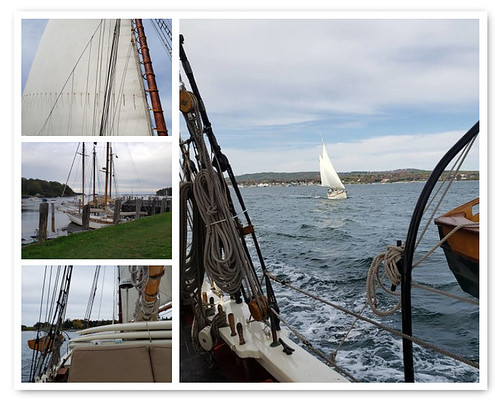
"Accommodations aboard are generally small and spare, and nightlife is nonexistent except for counting the shooting stars."
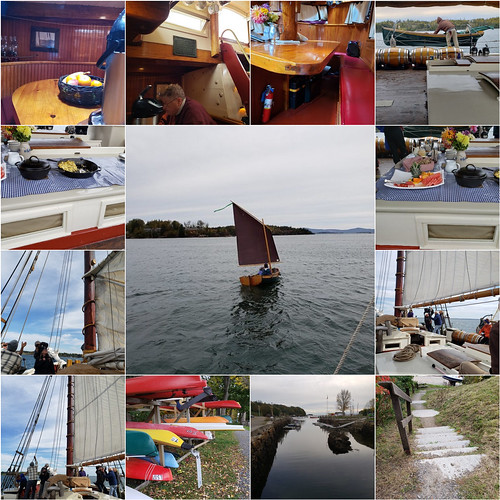
This was... an interesting experience. I'm so glad I did it. I do not feel the need to do it again. I sailed on the last sailing of the season on the Stephen Tabor and what I'll probably remember most was how cold it was. Every night, I'd go to bed fully clothed (including jackets [yes, multiple jackets], hat, and gloves) and still would shiver for a long time before going to sleep.

So, here's the the good, the bad, and the ugly:
The UGLY:
The BAD:


"Going where the wind carries you through America's quintessential cruising grounds ... and enjoying impromptu stops at tiny deserted islands to enjoy a feast of lobsters, plucked live moments before from a passing fisherman's boat."

"Accommodations aboard are generally small and spare, and nightlife is nonexistent except for counting the shooting stars."

This was... an interesting experience. I'm so glad I did it. I do not feel the need to do it again. I sailed on the last sailing of the season on the Stephen Tabor and what I'll probably remember most was how cold it was. Every night, I'd go to bed fully clothed (including jackets [yes, multiple jackets], hat, and gloves) and still would shiver for a long time before going to sleep.

So, here's the the good, the bad, and the ugly:
The UGLY:
- There was a TV production crew that sailed with us. They were just always in the way. The cameraman would film the food (in the most minute detail) at every meal. Dude, just get out the way, we want to eat.
- Did you want to take a picture? Too bad, that camera guy was always there blocking your shot or just generally in the shot.
- We did a bunch of stuff that seemed designed for them to get the footage they wanted for the story they want to tell.
- I'm really curious how the piece will actually come out and will update with a link if I find it. (They interviewed me because they thought the "why" of me being there was interesting, but I have no idea if they'll use any of it. I hope they don't. I looked homeless because I'd been sea camping for a week.)
- There was one other guest who was super annoying. SUPER. ANNOYING.
The BAD:

- Cold, so cold - there is no heat. The only place with heat is the galley because the wood burning stove is there. Also, we were sailing during a Nor'easter.
- They are not kidding about the spare accommodations. (I was in cabin 4.) There was precisely one 2x2 foot square where I could stand upright in my cabin. Even in the bunk I couldn't sit upright.
- Stairs? No, we have ladders. You will not be able to comfortably take things above or below deck. (Unless you're the crew - they are like sea-gazelles or something.)
- No seating - especially at meal times. The seating is pretty limited, in general, on deck, and during mealtime they co-opt most of it to lay out the food and the washing up line. The one meal we ate in the galley was so crowded I thought I might have a panic attack from being trapped.
- The head. Just no. nope. don't wanna do that again.
The GOOD:
- The crew was amazing. Seriously, they were all just fascinating and friendly and super competent, and worked so fucking hard the entire time.
- Captain Noah, first of all - he inherited the schooner/sailing legacy from his parents and all I can say is - they named him Noah - of course, he was going to end up on a boat. All of the crew talked about what a great captain he was and how he was different from other captains they sailed with previously.
- The food. Did I mention the wood burning stove? That is all they had to cook on. Everything was prepared by our fantastic chef and done with serious space, equipment, and refrigeration limitations. Add to that that we had a vegetarian and non-dairy eating guest (and me with the shellfish allergy), and she was masterful in that galley.
- Wine and Cheese. Captain Noah told us that they made a legit decision to spend their print marketing budget on cheese this year and it showed. A full blown cheeseboard, from local shops, every night and bottles and bottles of wine to pair.
- The other guests (except really annoying guy and the TV people). I have nothing personal against the TV guys. They're fine, but they are not there because they really wanted to vacation there, and they weren't on vacation -they were working. But everyone else was seriously so interesting.
- We had a blind guy on our ship. A blind guy who was sailing for, like, his 33rd time (or something outrageous like that).
- There was a couple on their honeymoon (she'd been a PeaceCorp volunteer in Africa, and he was on his 3rd marriage [at least!]).
- There were a couple of Minnesotans - he was a landscape architect before retirement.
- A retired doctor (like brain surgeon doctor) and his Finnish wife. Both fascinating.
- There was also a travel nurse from Ogden, UT who was there by herself. Trust me, she will be heavily featured in the TV piece.
- And because it was the last sailing of the season a couple of the crew had invited their moms. And they were both bad-ass ladies.
October 28, 2019
#194 The Balsams
"This lavish 1866 grand resort hotel sits on a remarkably isolated spot 12 miles south of the Canadian border, amid a landscape its owners describe as "the Switzerland of America," on the banks of Lake Gloriette, in a U-shaped mountain pass surrounded by 800-foot cliffs."
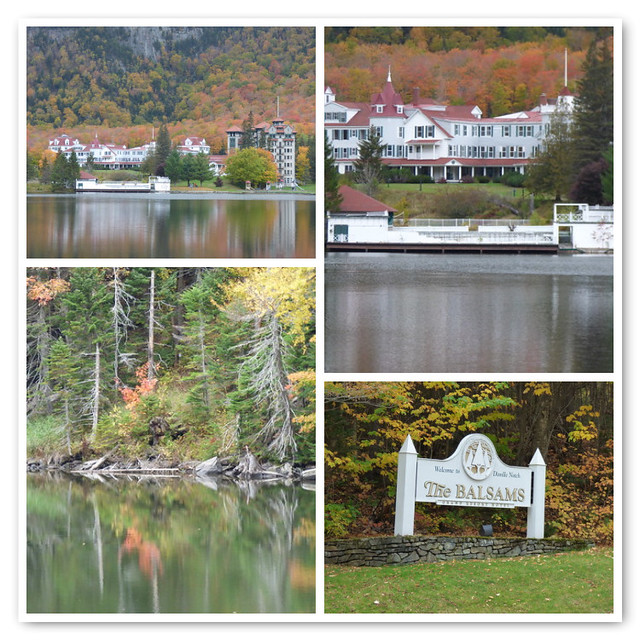
The Balsams closed in 2011 after being purchased by new owners. The original intent was to renovate the property, and in 2014 another heavy-weight joined the redevelopment effort. From everything I can gather, the redevelopment has been mired in a variety of delays including, financing, permitting, etc. Right now, they are marketing condos or residences in the property.
The resort is still visible from a public road, but many of the roads to the resort have been blocked and closed. Maybe someday it will be a grand resort destination again.

The Balsams closed in 2011 after being purchased by new owners. The original intent was to renovate the property, and in 2014 another heavy-weight joined the redevelopment effort. From everything I can gather, the redevelopment has been mired in a variety of delays including, financing, permitting, etc. Right now, they are marketing condos or residences in the property.
The resort is still visible from a public road, but many of the roads to the resort have been blocked and closed. Maybe someday it will be a grand resort destination again.
October 26, 2019
#193 Northeast Kingdom
“In 1949, a former US senator from Vermont, struck by the timeless beauty and isolation of his state’s three most northeastern counties (Orleans, Essex, and Caledonia), dubbed them the Northeast Kingdom, and when the foliage flames each autumn, they could very well be the most beautiful place in America.”
Lake Willoughby is often compared to Switzerland’s Lake Lucerne...it was beautiful and the water was so clear.
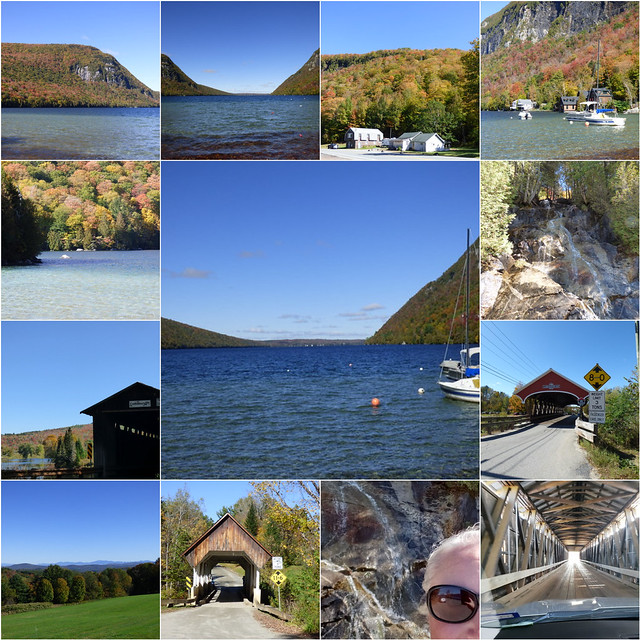
St. Johnsbury is the unofficial gateway, and I think I read that 90% of the fall foliage pictures you see are from this area, but just keep driving until you get lost and enjoy the fiery mountains, valleys, maple farms, and cheesemakers.

I stopped at 2 different Cabot Cheese houses. One was the original in Cabot, VT, and the second was sharing a parking lot with a distillery and chocolatier I was planning to visit. Both were disappointing, but I took the opportunity to eat a lot more of the Tuscan Cheddar samples because that cheese was so good.
Also, Ben & Jerry's HQ is in this general area, but I'm not a huge B&J fan, and it always seemed crowded. But if you love ice cream, you should definitely visit.
I was there on a weekend where it seemed every tiny town I drove through was having some sort of festival or fair or something. Basically the whole state looked exactly like a Norman Rockwell painting, and exactly what you think of when you picture Vermont (albeit way more crowded).
Also, I was having dinner one night and my server (who coincidentally looked so much like my cousin that I had to ask her if she had family in Utah) asked why anyone would vacation in Vermont. I was a little stunned because Vermont is universally known as an amazing autumn vacation spot. But I guess when you grow up with something as just your normal, everyday - you may not appreciate it as much.
Lake Willoughby is often compared to Switzerland’s Lake Lucerne...it was beautiful and the water was so clear.

St. Johnsbury is the unofficial gateway, and I think I read that 90% of the fall foliage pictures you see are from this area, but just keep driving until you get lost and enjoy the fiery mountains, valleys, maple farms, and cheesemakers.

I stopped at 2 different Cabot Cheese houses. One was the original in Cabot, VT, and the second was sharing a parking lot with a distillery and chocolatier I was planning to visit. Both were disappointing, but I took the opportunity to eat a lot more of the Tuscan Cheddar samples because that cheese was so good.
Also, Ben & Jerry's HQ is in this general area, but I'm not a huge B&J fan, and it always seemed crowded. But if you love ice cream, you should definitely visit.
I was there on a weekend where it seemed every tiny town I drove through was having some sort of festival or fair or something. Basically the whole state looked exactly like a Norman Rockwell painting, and exactly what you think of when you picture Vermont (albeit way more crowded).
Also, I was having dinner one night and my server (who coincidentally looked so much like my cousin that I had to ask her if she had family in Utah) asked why anyone would vacation in Vermont. I was a little stunned because Vermont is universally known as an amazing autumn vacation spot. But I guess when you grow up with something as just your normal, everyday - you may not appreciate it as much.
October 24, 2019
#192 Stowe Mountain Resort
“Beginning at the Massachusetts border and continuing north along the rugged spine of the Green Mountains, the winding 2-lane Route 100 is Vermont’s country road and main street. At the road’s northernmost reach, toward the Canadian border, lies the Stowe Mountain Resort, the queen of the Northeast ski resorts and one of the oldest in the United States, created in the 1930s.”
There were numerous signs warning gondola riders that there are no beginner trails from the top of the mountain. Also, all the gondola warning signs were first in German and then in English - which I thought was interesting.
The top of the mountain was beautiful, but so crowded - probably because it was a perfect autumn day in Vermont.

“The Trapp Family Lodge, the country’s first-ever cross country ski center, [was] created in 1968. This is where the Austrian family of Sound of Music fame settled in 1942 after crossing over the Alps to escape the Nazis. The quality of Tyrolean coziness, old-world service, and promise of a mean wiener schnitzel and spaetzle in the lodge’s restaurant make this chalet-style lodge one of the loveliest around.”
My lunch was good, not great - and the service was pretty slow, but I stopped at the Kaffeehaus for dessert and my pastry was out of this world delicious. Mostly, I spent the afternoon trying not to burst out into "The Sound of Music" score.

There were numerous signs warning gondola riders that there are no beginner trails from the top of the mountain. Also, all the gondola warning signs were first in German and then in English - which I thought was interesting.
The top of the mountain was beautiful, but so crowded - probably because it was a perfect autumn day in Vermont.

“The Trapp Family Lodge, the country’s first-ever cross country ski center, [was] created in 1968. This is where the Austrian family of Sound of Music fame settled in 1942 after crossing over the Alps to escape the Nazis. The quality of Tyrolean coziness, old-world service, and promise of a mean wiener schnitzel and spaetzle in the lodge’s restaurant make this chalet-style lodge one of the loveliest around.”
My lunch was good, not great - and the service was pretty slow, but I stopped at the Kaffeehaus for dessert and my pastry was out of this world delicious. Mostly, I spent the afternoon trying not to burst out into "The Sound of Music" score.

October 21, 2019
#191 Shelburne Farms
“On a bluff overlooking 100-mile-long Lake Champlain and the Adirondacks beyond, the Inn at Shelburne Farms sits on 1400 aces designed by great landscape architect Frederick Law Olmsted, who laid out New York’s Central Park. You’re the lord of the manor at the red brick, Queen Anne-style country mansion, built in 1899 as the largest home in Vermont by Lila Vanderbilt and her husband William Seward Webb.”

“The farm was conceived by the Webbs and embellished by their great-grand-children as a nonprofit environmental education center. In addition to being a rural marvel, it produces an excellent Cheddar cheese, compliments of the Brown Swiss cows grazing within site [and smell].”

“The farm was conceived by the Webbs and embellished by their great-grand-children as a nonprofit environmental education center. In addition to being a rural marvel, it produces an excellent Cheddar cheese, compliments of the Brown Swiss cows grazing within site [and smell].”
Subscribe to:
Posts (Atom)





